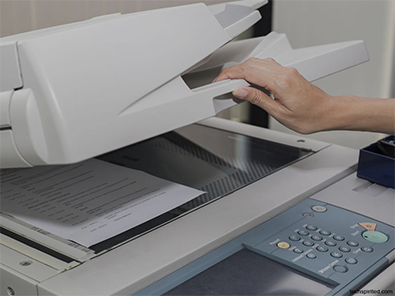Printers have become an indispensable tool in both personal and professional settings. With a wide range of printing needs, it’s essential to understand the different types of printers available on the market. Each printer type offers unique features and functionalities tailored to specific requirements. In this blog post, we will explore some of the most common types of printers, helping you make an informed decision when selecting the perfect printer for your needs.
Inkjet Printers:
Inkjet printers are one of the most popular and versatile types of printers. They work by propelling tiny droplets of ink onto the paper. Inkjet printers are known for their ability to produce high-quality color prints, making them ideal for printing photos and documents with vivid graphics. They are generally more affordable than other printer types and are suitable for home users or small offices with moderate printing volumes.
Laser Printers:
Laser printers use laser technology and toner cartridges to produce prints. They are renowned for their exceptional speed and high-quality output, particularly for text documents. Laser printers are commonly found in offices and businesses with high printing demands. They are efficient, reliable, and offer cost-effective printing in the long run. However, laser printers tend to be more expensive upfront than inkjet printers.
All-in-One Printers:
All-in-one printers, also known as multifunction printers (MFPs), combine multiple functions into a single device. These printers can not only print but also scan, copy, and sometimes fax. All-in-one printers offer convenience and space-saving benefits, eliminating the need for separate devices. They come in both inkjet and laser variations, making them suitable for a wide range of users, from home offices to large workgroups.
Photo Printers:
Designed specifically for printing high-quality photographs, photo printers ensure exceptional color accuracy and detail. They use advanced inkjet technology to produce prints with vibrant colors and sharp resolution. Photo printers are available in various sizes, from small compact models to larger professional-grade options. They are popular among photographers, artists, and anyone who wants to print cherished memories in stunning detail.
3D Printers:
3D printers are a revolutionary type of printer that can create three-dimensional objects by layering materials such as plastic, metal, or even food. They have gained significant popularity in industries like manufacturing, architecture, and healthcare, allowing for the creation of prototypes, custom parts, and medical models. 3D printers come in different technologies, including fused deposition modeling (FDM) and stereolithography (SLA), each with its own advantages and applications.
Dot Matrix Printers:
Although less common in today’s market, dot matrix printers are still used in specific industries that require continuous-form printing or carbon-copy documents. Dot matrix printers use a print head that strikes an ink-soaked ribbon against the paper, creating dots that form characters or images. They are known for their durability and ability to print on multipart forms, making them suitable for tasks like invoicing, receipts, and inventory documentation.
How to know which type of printer is best for you?
Choosing the best type of printer for your needs requires careful consideration of several factors.
Start by understanding your specific printing requirements. Consider the types of documents you print most frequently, whether it’s text documents, color graphics, photos, or specialized materials like labels or envelopes.
Evaluate the quality of prints you require. If you prioritize vibrant colors and high-resolution photo printing, inkjet or photo printers would be suitable options. Laser printers excel in producing sharp text documents and are often preferred for professional settings.
Consider your budget for purchasing and maintaining a printer. Inkjet printers are typically more affordable upfront, while laser printers tend to have a higher initial cost but lower operating costs in the long run.
Consider the available space in your office or home. All-in-one printers offer multiple functions (print, scan, copy, and sometimes fax) in a single device, making them suitable for smaller spaces or those seeking convenience.
Conclusion:
When choosing a printer, it’s crucial to consider your specific printing needs, budget, and long-term requirements. Inkjet printers excel in color printing and affordability, while laser printers offer speed and precision for text-heavy documents. All-in-one printers provide versatility, and photo printers deliver exceptional photo quality. For advanced applications, 3D printers and dot matrix printers cater to specific industries. Assess your printing demands and explore the features and capabilities of different printer types to find the perfect match that meets your requirements and enhances your productivity.


